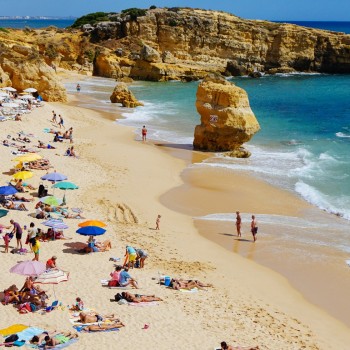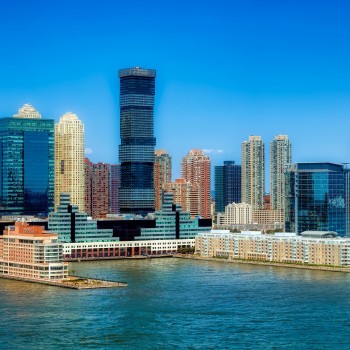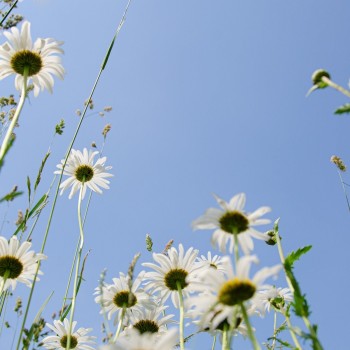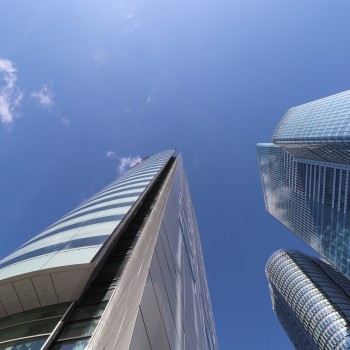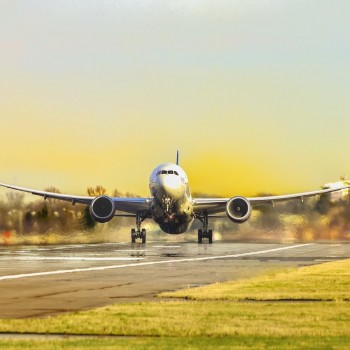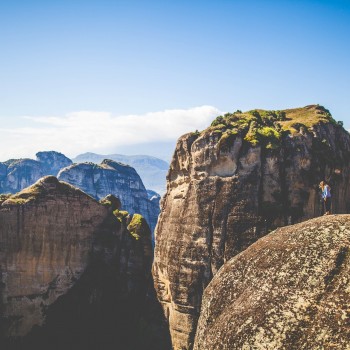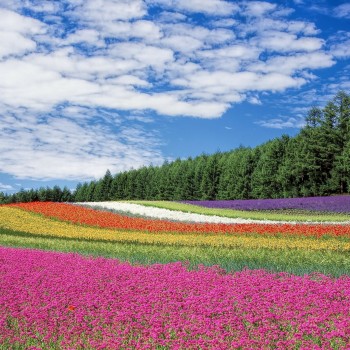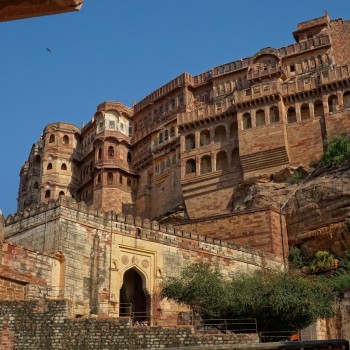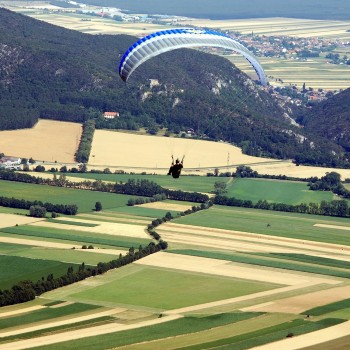Colombia
Capital city description
Bogotá is the capital of and largest city in Colombia. It is a place of convergence for people from all around the country and is therefore diverse and multicultural.
The city is also very green, and the hills extend along its eastern boundary, dwarfed by its two highest points, Monserrate and Guadalupe. The landscape that the people of Bogotá enjoy daily—the sea of green that makes up the Andes mountain range, rising in the east—would be nearly impossible to find in any other large city.
Bogotá is the melting pot of Colombia. Here, all the cultures from different country regions have a place, from the cuisine of the Coffee Triangle to the exhilaration and joy of the Caribbean, or the artisanal heritage of Boyacá and the Valle de Cauca Festival.
Climate
Summer: Dec. 22 - Mar. 21 (the rainy season in the highlands and jungle).
Autumn: Mar. 22 - Jun. 21
Winter: Jun. 22 - Sept. 22.
Spring: Sept. 23 - Dec. 21
The seasons in Colombia are more characterized by rainfall than by temperature changes. From December to March, there is a dry season in the low areas on the Caribbean coast (the north); the rest is rainy. In the south, the rainy season is interrupted by a less rainy nature in June and July, and on the Pacific coast, a dry season is almost non-existent.
Languages spoken
Spanish is the most popular language spoken in Colombia and is spoken by more than 99.2% of Colombians.
Fun/Fascinating Facts
- Colombia is the second most biodiverse country globally, after only Brazil, ten times its size, and one of only 17 “megadiverse” countries. It has the highest number of species by area globally, including more species of bird than all of Europe and North America combined.
- The official name of Colombia is the Republic of Colombia and is derived from the last name of explorer Christopher Columbus. The country’s name is pronounced Col-o-mbia, not Col-u-mbia, a common mistake by non-Spanish-speaking visitors.
- Colombia is the only country in South America with coastlines on the Pacific Ocean and the Caribbean Sea.
- The area covered by modern-day Colombia was originally inhabited by the indigenous tribes Muisca, Quimbaya, and Tairona. In 1499 the Spanish arrived and colonized the area, calling it New Granada.
- Colombia has a vibrant music scene. Two of the best-known Colombian musicians are Shakira and Juanes.
Unique Customs/Traditions
- Colombians are generally very happy, outgoing people who set great store by social interactions. They love to tell people about almost every aspect of their country and its culture and history, and they do so with such enthusiasm that it may seem like boasting. It is important not to snub any aspect of Colombia, as this is likely to get you off on the wrong foot with the proud locals.
- Family is also a crucial part of Colombian life, and as such, expect to see traditional roles maintained in the household. Meeting with family members will prioritize friends and business colleagues, so do not be offended if you appear to be ‘blow off’ in favor of a family event. Unfortunately, this focus on family can also make it difficult for foreigners to integrate into Colombian society.
- If dining with locals, you should be aware that table manners are essential in Colombia. Make sure you keep your hands visible, with elbows off the table, and make sure you don’t sit down or start eating until invited to do so by your host. Always eat with cutlery, as eating with your fingers at all may be frowned upon. When dining out, be aware that the person extending the invitation will likely be expected to pay for the meal.
- If visiting Colombians in their home, it would be appropriate to take a small gift, such as wine, chocolates, or flowers, though make sure you steer clear of marigolds or lilies, like in many countries associated with funerals.
Popular universities
| Name | Description | |
|---|---|---|
| Universidad Nacional de Colombia | Established in 1867, Universidad Nacional de Colombia (National University of Colombia) is a non-profit public higher education institution located in the urban setting of the large metropolis of Bogotá (population range of over 5,000,000 inhabitants) Bogota. This institution also has branch campuses in the following locations: Medellín, Manizales, Palmira, Arauca, Leticia, San Andrés Islas. Officially recognized by the Ministerio de Educación Nacional, Colombia (Ministry of National Education of Colombia), Universidad Nacional de Colombia (UNAL) is a vast coeducational Colombian higher education institution. Universidad Nacional de Colombia (UNAL) offers courses and programs leading to officially recognized higher education degrees such as bachelor's degrees, master's degrees, doctorate degrees in several areas of study. | |
| Universidad de los Andes, Colombia | Established in 1949, Universidad de Los Andes, Colombia (University of the Andes, Colombia) is a non-profit private higher education institution located in the urban setting of the large metropolis of Bogotá (population range of over 5,000,000 inhabitants), Bogota. Officially recognized by the Ministerio de Educación Nacional, Colombia (Ministry of National Education of Colombia), Universidad de Los Andes, Colombia (UNIANDES) is a large (uniRank enrollment range: 10,000-14,999 students) coeducational Colombian higher education institution. Universidad de Los Andes, Colombia (UNIANDES) offers courses and programs leading to officially recognized higher education degrees such as bachelor's degrees, master's degrees, doctorate degrees in several areas of study. | |
| Universidad de Antioquía (University of Antioquia) | Founded in 1803, Universidad de Antioquía (University of Antioquia) is a non-profit public higher education institution located in the urban setting of the metropolis of Medellín (population range of 1,000,000-5,000,000 inhabitants), Antioquia. This institution also has branch campuses in the following locations: Carmen de Viboral, Sonsón, Santa Fe de Antioquia, Segovia, Andes, Apartadó, Turbo, Carepa, Caucasia, Puerto Berrío, Amalfi, Yarumal. Officially recognized by the Ministerio de Educación Nacional, Colombia (Ministry of National Education of Colombia), Universidad de Antioquía (UDEA) is a very large coeducational Colombian higher education institution. Universidad de Antioquía (UDEA) offers courses and programs leading to officially recognized higher education degrees such as bachelor's degrees, master's degrees, doctorate degrees in several areas of study. | |
| Pontificia Universidad Javeriana | Established in 1623, Pontificia Universidad Javeriana (Pontifical Javeriana University) is a non-profit private higher education institution located in the urban setting of the large metropolis of Bogotá (population range of over 5,000,000 inhabitants), Bogota. This institution also has a branch campus in Cali. Officially recognized by the Ministerio de Educación Nacional, Colombia (Ministry of National Education of Colombia), Pontificia Universidad Javeriana (PUJ) is a large coeducational Colombian higher education institution formally affiliated with the Christian-Catholic religion. Pontificia Universidad Javeriana (PUJ) offers courses and programs leading to officially recognized higher education degrees such as bachelor's degrees, master's degrees, doctorate degrees in several areas of study. | |
| Universidad ICESI (ICESI University) | Founded in 1979, Universidad ICESI (ICESI University) is a non-profit private higher education institution located in the suburban setting of the metropolis of Cali (population range of 1,000,000-5,000,000 inhabitants), Valle del Cauca. Officially recognized by the Ministerio de Educación Nacional, Colombia (Ministry of National Education of Colombia), Universidad ICESI is a medium-sized coeducational Colombian higher education institution. Universidad ICESI offers courses and programs leading to officially recognized higher education degrees such as bachelor's degrees, master's degrees, doctorate degrees in several areas of study. | |
Festivals & Events
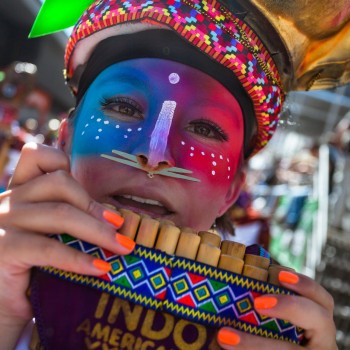
Blacks and Whites' Carnival
Date: January
Colombia is recognized for its large variety of festivals, carnivals, and fairs. The Colombian Carnival has incorporated elements from European culture and traditions that belonged to Colombia's African and Amerindian cultures. The common characteristics of the festivals are the nomination of a beauty Queen and the setting up of a public dance floor.
A very important and traditional carnival is the Blacks and Whites' Carnival in Pasto, Nariño. It is one of the most ancient carnivals in the Americas.
Historically, the city of Pasto has been the crossroads and the meeting place for various peoples and colonies. The Carnival is celebrated every year between January 4 and 6. The Carnival includes four major stages: the Carnavalito (Children's Carnival), the Arrival of the Castaneda Family, Blacks' Day, and Whites' Day with the Grand Parade (this being the most important day for its beauty). In 2009 the Carnival was proclaimed by UNESCO as one of the Masterpieces of the Oral and Intangible Heritage of Humanity.
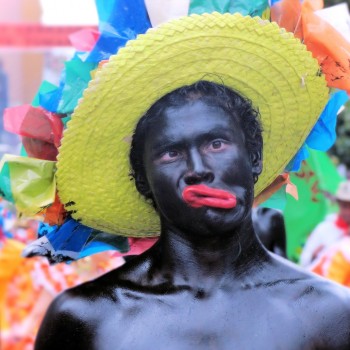
Carnival of Bogotá
Date: August
The Carnival of Bogotá is celebrated in Bogotá every year on August 5 and 6 for the city's anniversary of its Hispanic foundation. Bogotá was one of the first cities on the continent to celebrate its carnival. The celebration first dates back to 1916. Most of the cultural events take place in the heart of Parque Metropolitano Simón Bolívar.
The festivities also include pre-carnival festivals during July. The objective of the new carnival is to promote a collective atmosphere of fellowship and celebrate life, creative expression, and enjoyment. It further aimed to generate a feeling of belonging to the city, enforce reconciliation and fair play processes, and the inclusion and recognition of all districts and cultures of the Capital City of Colombia.

Rock al Parque
Date: July
Rock al Parque is a rock music festival taking place in Bogotá, Colombia, since 1995. Today the festival takes place over three days at Bogotá's Simon Bolivar Park. The festival's entry is free of charge. Due to the free nature of the festival, attendees can expect it to get bustling around the afternoon. Rock al Parque is the second largest rock festival in Latin America, after Rock in Rio.
The festival features national and international bands of different genres. Originally it only included rock music, gradually opening its doors to promote other genres, such as punk, reggae, ska, and blues musicians. Apocalyptica, Slipknot, Plastilina Mosh, and Manu Chao have performed in Rock al Parque, among other internationally famous bands.
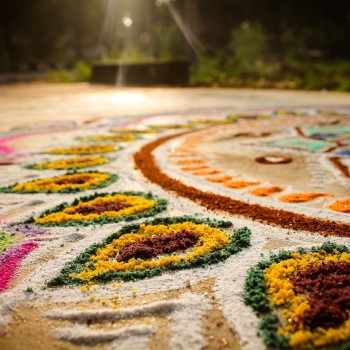
Festival of the Flowers
Date: August
Festival of the Flowers is a festival that takes place in Medellín, Colombia. The first Festival of the Flowers took place on May 1, 1957. Today the feast of flowers takes place in early August and lasts ten days, and it is the most important social event for the city.
There is a pageant, automobiles, a Paso Fino horse parade, and many musical concerts. It is an event that brings together thousands of visitors searching for flowers, enjoyment, music, and fun. The main flowers used are Pinocchios, lilies, carnations, agapanthuses, sunflowers, bridal veils, gladioli, chrysanthemums, roses, and orchids.
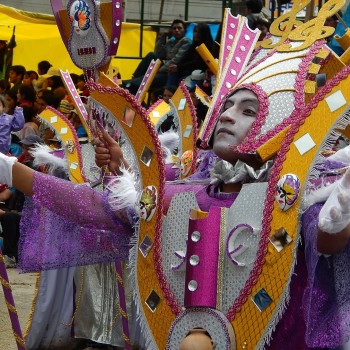
Barranquilla's Carnival
Date: February
Barranquilla's Carnival is Colombia's most important folklore celebration and one of the biggest carnivals in the world. The Carnival has traditions that date back to the 19th century. During the Carnival, the city gets busy with street dances, musical and masquerade parades. Barranquilla's Carnival includes dances like the Spanish palate, African congo, and indigenous mico y micas. Many styles of Colombian music are also performed, most prominently cumbia, and instruments include drums and wind ensembles. The Carnival starts on the Saturday before Ash Wednesday with the Battle of the Flowers, considered one of the main activities. The Battle of the Flowers is a traditional float parade composed of fabulous and most colorful creations.
The Great Parade on Sunday and Monday is marked by an Orchestra Festival with the Caribbean and Latin bands. The Great Parade is considered a day of masks and disguises because floats are not present on this day. Different dance groups compete against each other for the coveted prize of performing in the Battle of the Flowers the following year.
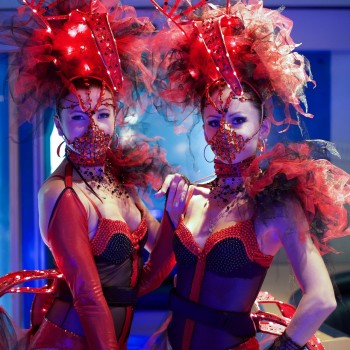
Cali Fair
Date: December
The Cali Fair is the most important cultural event in Cali. It celebrates its cultural identity, famous for the Salsa marathon, horse riding parades, and dance parties. The Fair has been celebrated since 1957. The Fair aims to promote cultural, racial, and musical diversity in the region. Every year, immediately after Christmas, between December 25 and 30, the city of Cali fills up with tourists from all over the country and abroad who come to participate in this excellent Fair.
People enjoy many activities like an opening cabalgata (parade of horseback riders), tascas, salsa concerts, bullfights parades, athletic activities/competitions, and cultural exhibitions. Cali also stands out as the world salsa capital, with the best national and international orchestras vibrating throughout the city and bringing together different publics in closed shows with phenomenal prize-winning dancers and multitudinous concerts staged by best interpreters of this musical genre.

Ibero-American Theater Festival
Date: March- April
The Ibero Theater Festival of Bogotá is a major cultural event in Colombia and one of the largest performing arts festivals globally. Every other year in the Colombian capital, it brings together the most important theater companies from five continents. For seventeen days, the city becomes the setting for colorful parades. In seventeen days,
Colombians and visitors worldwide come to Bogotá to massively attend the theater halls and fill the capital's streets, enjoying an unparalleled theater adventure. The festival offers a complete panorama of performing arts. Aside from classical works, it showcases dance, circus, music, puppetry, pantomime, performance art, and even concerts, many of which coincide in Bogota's halls and streets. Each version of the festival brings together about 2,000,000 spectators in 450 performances in theater halls and close to 150 street performances.
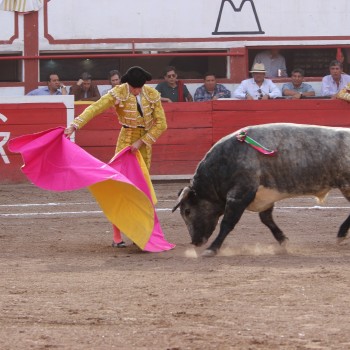
The Manizales Fair
Date: January 3 and ends on January 12.
The Manizalez Fair (Feria de Manizales) is known for its bullfighting season, concerts, exhibitions, parades, and the International Coffee Pageant. This fair has Spanish roots and is inspired by the April Fair of Seville in Spain, taking many of the customs and many traditions of Colombia's coffee region.
Attractions / Top Sights
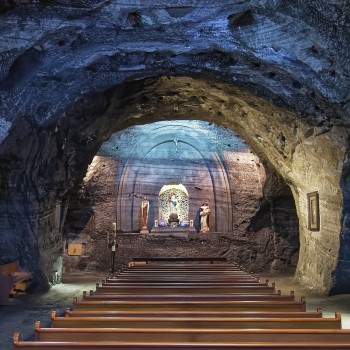
Salt Cathedral of Zipaquira
When to visit: Early in the afternoon or late in the afternoon
Just an hour’s drive north of Bogota in Zipaquirá, a city known as the salt mining capital of Colombia. As a result of salt mining, Zipaquirá has long had a concentration of extreme wealth. One thing that highlights this is the Salt Cathedral of Zipaquirá, a Catholic church constructed almost entirely of salt within a now-defunct mine.
Although this is a significant tourism destination, the Salt Cathedral accommodates nearly 3,000 parishioners every Sunday, and attending a church service can be an unforgettable experience. Surrounding the cathedral is an area known as the Salt Park, where visitors can see other landmarks within the mines and learn more about the industry at the Brine Museum.
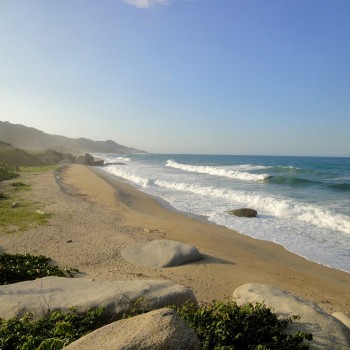
Tayrona National Park
When to visit: March-April / September - December
The northernmost part of Colombia is the Tayrona National Park, which borders the Caribbean Sea and offers remarkable beaches and scenery for visitors. One of the top spots in Tayrona National Park is the lagoon called La Piscina, where a natural reef turns the lagoon into a protected swimming area.
While snorkeling in La Piscina, it is possible to spot lobsters, fish, and rays among the seagrass and in the reef. There are also plenty of sandy hiking trails leading to and from the coast, many of which provide spectacular views over the Caribbean.
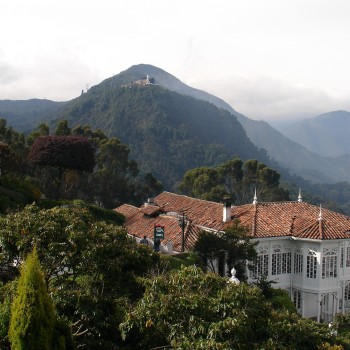
Monserrate
When to visit: December-March
Visiting the capital city of Colombia, the incredible Monserrate mountain is the main thing to see. This mountain stands out from the Bogota skyline with 10 341 feet above sea level. It is considered the most significant and famous symbol of the city.
From this area, you can enjoy an incredible view of the city and the Andes Mountains. It is possible to view the sun setting over Downtown Bogota in a truly spectacular fashion. Moreover, it has a vibrant history and great cultural significance.
.jpg)
Cartagena's Old Town
When to visit: December - April
Cartagena's Old Town is the first Spanish settlement in Colombia, and Old Town is bursting with historic colonial architecture. The walled Old Town, also known as the Ciudad Amurallada, contains several older neighborhoods and landmarks.
Of particular note is the Plaza Trinidad in the Getsemaní community, the oldest part of the colonial city and a hub for local eateries. Take advantage of the coastal location and try fried fish with a side of Arroz de coco or coconut rice.
Santuario de Las Lajas
Located north of the border with Ecuador is the Santuario de Las Lajas, Colombia's fascinating religious structures. Built spectacularly on a bridge that spans the Guaitara River, the neo-Gothic Santuario de Las Lajas looks like it is straight from a fairy tale—built in the early 20th century.
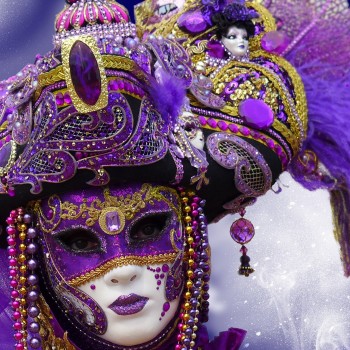
Carnaval de Barranquilla
When to visit: February- March
The Colombian city of Barranquilla is home to the world’s second-largest Carnaval during Carnaval de Barranquilla; the city is overrun with festivals, live music, and street parades.
The festivities kick off with La Batalla de Flores, or the Battle of the Flowers, where parade floats are decorated with flowers in magnificent and colorful designs. Attendees often wear bright colors or costumes that represent a figure or a fable in Colombian heritage.
Los Nevados National Park
The Los Nevados National Park is perched at a high elevation and is centered around some of the country’s most incredible volcanic peaks. The snow-covered Nevado Del Ruiz and Nevado del Tolima, among others, serve as the park’s main attraction.
Hiking is a popular pastime, and those with a streak of adventure can camp in the park’s backcountry. There is also the opportunity to spot the local wildlife, including spectacled bears, tiger cats, Andean condors, and pumas.
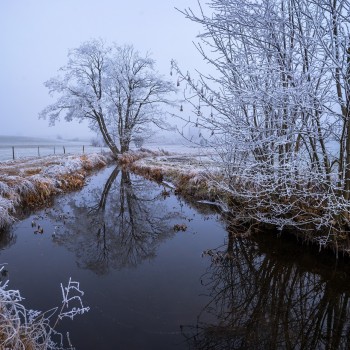
Cano Cristales
When to visit: June-November
Whether it is known as Caño Cristales, the Liquid Rainbow, or the River of Five Colors, this is one natural landmark that should be on every traveler's itinerary. Unfortunately, Caño Cristales has been closed to tourism since 1989 due to FARC's presence in the surrounding areas. Still, a few tourist agencies have recently begun offering carefully crafted tours to the site.
The river is located just outside La Macarena's small town in the national park known as Serranía de la Macarena. Plants, rocks, sand, and algae color the river, looking black, white, green, yellow, or bright red depending on location. Hiking along the banks of the Caño Cristales is an adventure on its own, but travelers can also head to the waterfall of Los Cuarzos or swim in the natural pools.

Ciudad Perdida
When to visit: December to March
Much of Colombia is still an undeveloped jungle, and Ciudad Perdida is nestled right in the heart of that jungle. Also known as the Lost City of Teyune, Ciudad Perdida is a pre-Columbian settlement constructed around the eighth century by the Tayrona Indians.
The settlement was once a thriving hub of culture, but today all that remains are stone terraces in circular shapes, many of them overgrown by the surrounding jungle. The area is famous for longer guided treks, where participants can hike from camp to camp and experience the pristine, natural environment of the jungle.
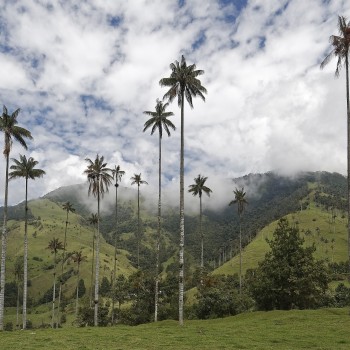
10. Valle de Cocora
When to visit: December to March / July to August
The symbol of Colombia is the wax palm, and the Valle de Cocora is the ultimate spot to see these trees in a stunning environment. The surreal landscape is a lush green, and as the fog lifts, it is possible to see the tremendous height of the wax palms growing upright on the valley's hills.
The landscape is the main attraction at Valle de Cocora, but there are multiple ways to see it all. Popular options include horseback riding, Jeep tours, and a six-hour hiking loop.


